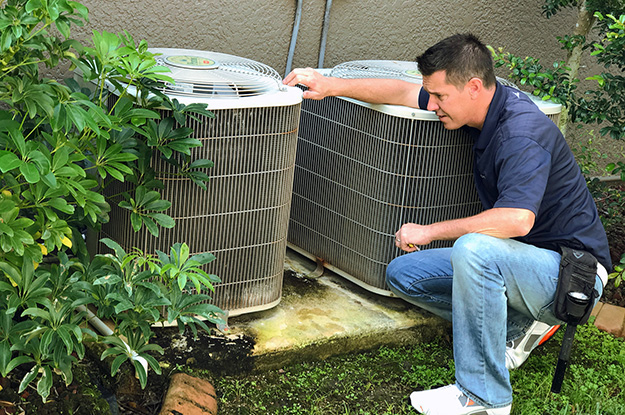Nobody want to be surprised by having to update their HVAC system. The average cost of replacing a single HVAC system is approximately $4,500 but can vary depending on the size, model and brand of the system. How can we help protect you from this unexpected potential expense?
Though the home inspection cannot guarantee the HVAC system will not fail in the future, we can test and inspect the system to give you better perspective on its condition and further insight on the balance of the remaining life expectancy.
Due to the cost of the replacement, the heating, venting and air conditioning system is one of the major pillars of this home inspection. The average life expectancy for an HVAC system is approximately 10 years, but this can vary widely depending on the quality of the equipment and the maintenance that had been performed. We will try to identify the age of both the A/C and the Air Handler as well as reporting on the physical condition of the system as well. An air temperature differential reading will be taken to identify how well the system was performing at the time of the inspection. Temperatures will be tested at random registers throughout the home to assure that you are receiving adequate air flow with properly conditioned temperatures. The ductwork will be observed while we are inspecting the attic or crawl space. We will identify the condition of the duct work while also verifying that it is properly supported. It is not uncommon to observe leaking or obstructed ductwork that diminishes or limits the intended air flow to the home. This is not an air quality test and we are not inspecting inside the ductwork or plenum boxes. It is always a good idea to have the duct work cleaned and serviced as needed to help maximize the quality of the air in the home. The future failure of an HVAC system cannot always be determined by the home inspection as we are limited to evaluating this system during a two to three-hour window. Components and mechanics within this system can fail with no real indication or warning. The cost of repair versus the cost of replacement at that point is always the question and decision in balance.
| 












